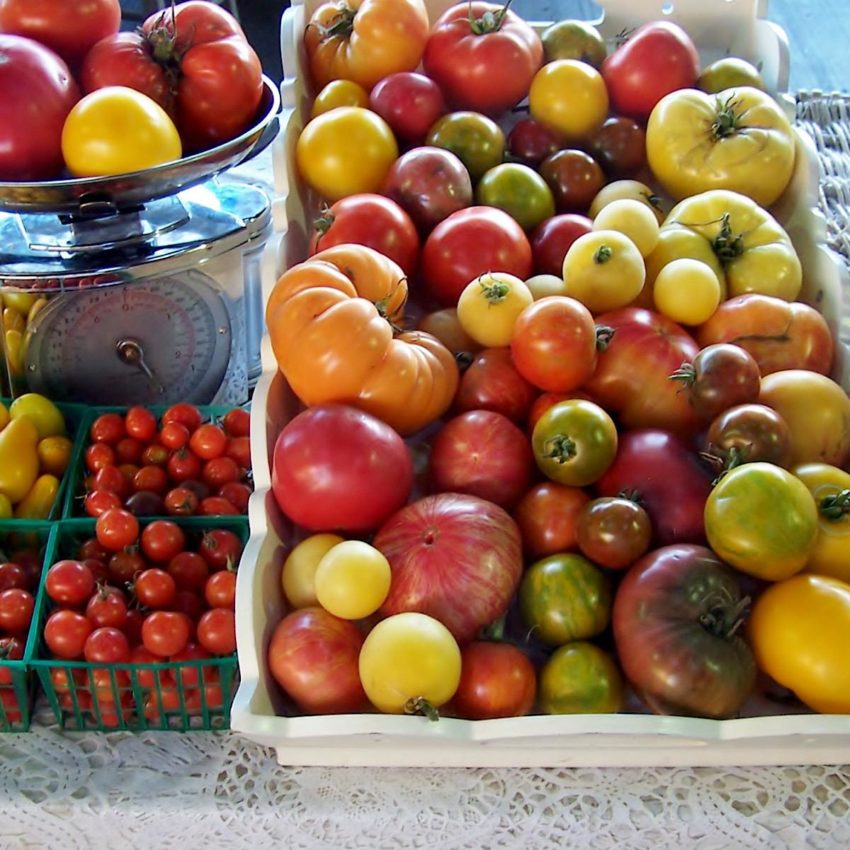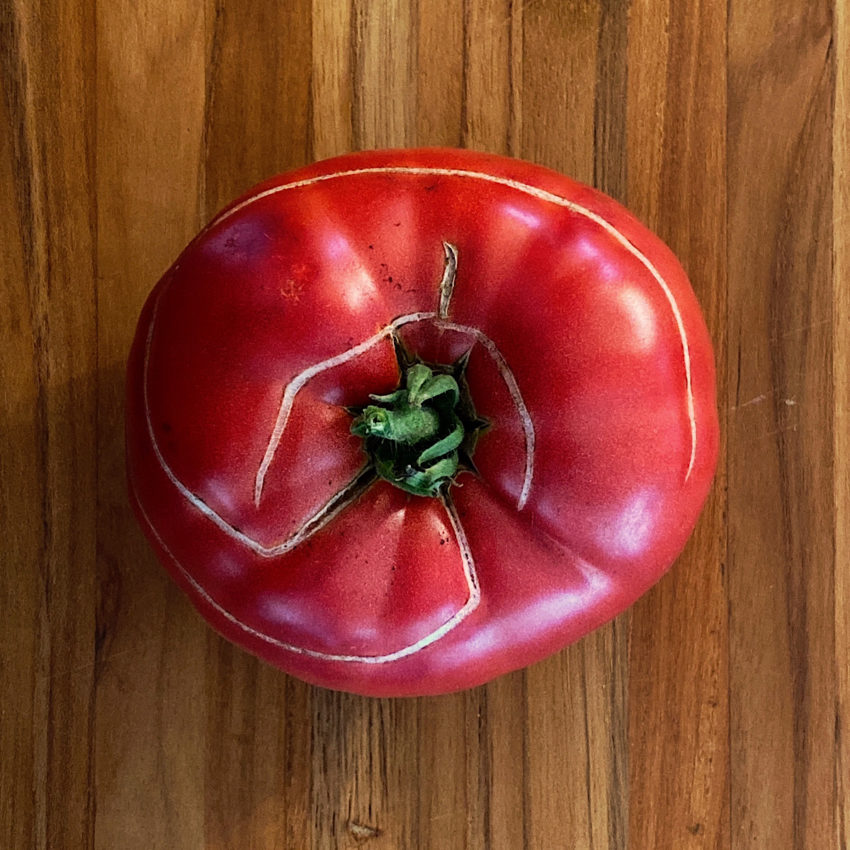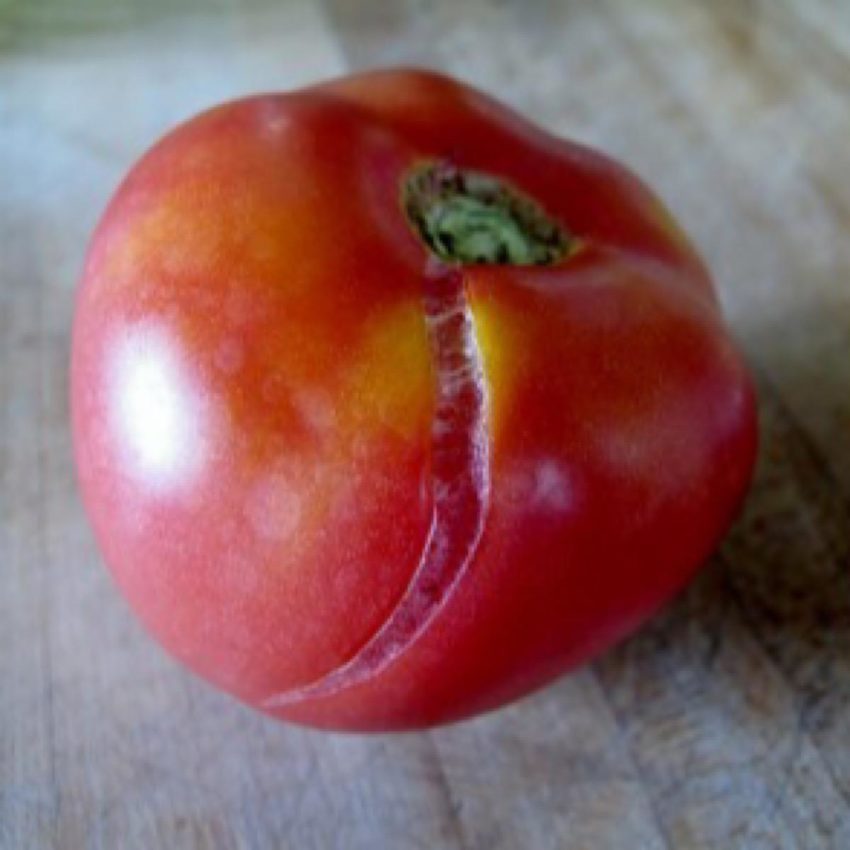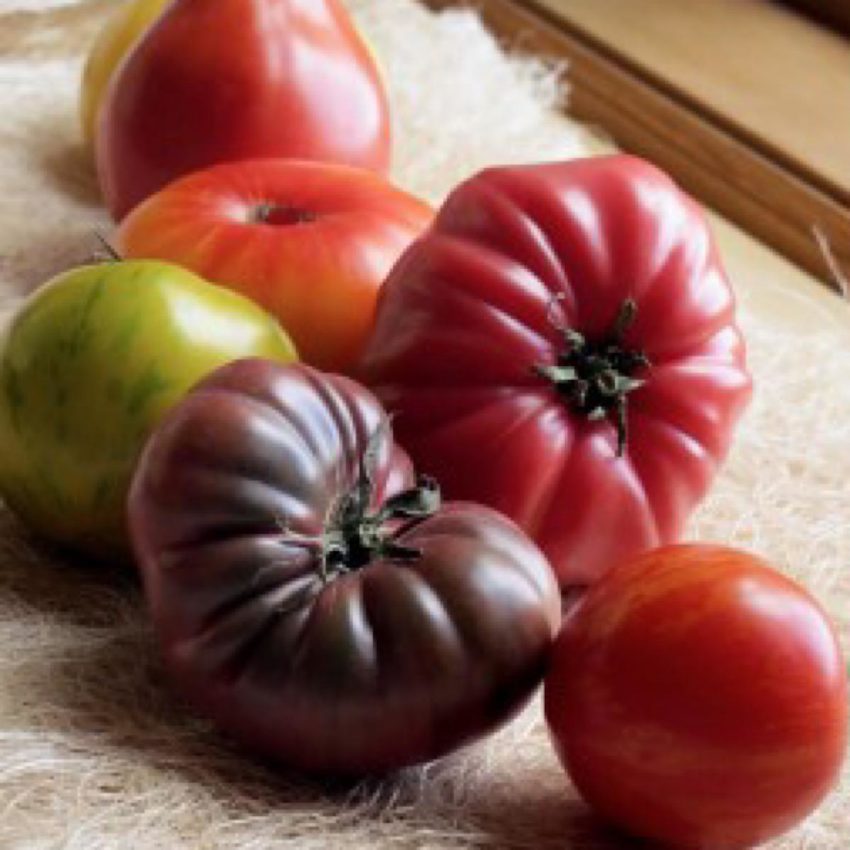It is so disappointing to carefully tend to your heirloom tomato plants, waiting for the delicious reward of perfect juicy tomatoes, only to see them crack and split on the vine. Because heirloom tomatoes have thin skins, you tend to see more splitting and cracking, especially with inconsistent watering.
Here are a few tips that may help you to decrease or prevent cracking of these delicious tomatoes.

Jump to: Concentric Cracking | Longitudinal Cracking | Preventing Cracking
This post may contain affiliate links. As an Amazon Associate, I also earn from qualifying purchases. You can read our disclosure information here–
If you’re anything like me, the expectation of that first flush of vine-ripened heirloom tomatoes is that it will have robust flavor, sometimes referred to as that “old-fashioned taste”. The thick-skinned grocery store tomatoes that have been bred for shipping and shelf life rather than taste me pining for the first homegrown tomato.
It can feel devastating to anticipate a bountiful harvest, only to see heavy amounts of cracking and splitting in the skin!
Sometimes the cracking will just mean a shorter time on the counter before you eat it, but deeper cracking can also allow disease to enter the tomatoes and result in total loss.
Cracking can occur at all stages of fruit growth, but as fruits mature they become more susceptible, especially as their color develops.
Some varieties of tomatoes are more susceptible to cracking than others, regardless of whether it is an heirloom variety or a hybrid variety.
For detailed information on heirloom varieties that are less prone to cracking, see the heirloom variety charts.
Two Types of Cracking in Tomatoes
There are two different forms of cracking in tomatoes, one of which is primarily cosmetic and one which is a result of weather and growing conditions.
Concentric Cracking:

Concentric cracking occurs in a ring or rings around the stem end. This is a genetic characteristic and can’t really be prevented.
The good news is that there is absolutely nothing wrong with the fruit, and the taste is fine. Scar tissue forms over the cracks, preventing access to bacteria and fungi, which would result in rotting.
Occasionally, with heavy rains the scar tissue may open up resulting in some rotting. This is no longer just cosmetic and you will want to harvest those tomatoes and cut off the portion with open cracking.
If the cosmetic look of “non-open” concentric cracking bothers you, and you grow your own tomatoes, select varieties that the seed catalogs refer to as “smooth” or “perfect”.
Sometimes, but not always, they will note whether the variety is “resistant to cracking”.
Longitudinal Cracking:

Any tomato variety can develop longitudinal cracking, where the tomato splits from top to bottom. Longitudinal cracking (also referred to as radial cracking) starts at the stem end and progresses toward the blossom end.
This type of cracking happens when the internal expansion in the tomato is faster than the expansion of the “epidermis”, forcing the skin to crack to accomodate the expansion.
Essentially the skin on a more mature tomato can’t expand anymore in response to the absorption of water, so the skin splits open.
Don’t be afraid to eat these split tomatoes, or use in cooking, as long as you harvest them before bacteria and fungi contaminate the split.
Cracking can occur at all stages of fruit growth, but as fruit mature and become larger they become more susceptible, especially as color develops.
Preventing Cracking in Heirloom Tomatoes
With respect to concentric cracking, the only thing you can do is select varieties that do not exhibit this genetic characteristic. That means reading the seed catalogs carefully and looking for phrases such as “smooth tomatoes”, ”perfect tomatoes” or “resistant to cracking”.
For radial cracking, prevention is achieved by:
- reducing fluctuations in soil moisture, especially during later stages of development. Make sure you don’t let the plants dry out and then deluge them with water. Keep the watering nice and consistent. A good rule of thumb is to poke your finger in the soil and when it is dry down to 1 inch, it’s time to water.
- selecting crack-resistant varieties;
- maintaining a good foliage cover, since exposed fruit are more susceptible;
- harvesting your tomatoes at an earlier stage of development (of course, this results in less of the sugars and complexity of flavors developing).

Do you have any photos of cracked tomatoes that you would care to share to illustrate the point? I’d love to share them if you do!
More on Heirloom Tomato Varieties
- How to get the earliest tomatoes
- Which heirloom tomatoes have the most flavor
- Best heirloom tomato varieties trialed in 2020
- Growing tomatoes in pots
- Try this smoked tomato jam for a Winter treat
Happy Trails….and may your harvest be crack-free!
If you like my articles about cooking and gardening, subscribe to my weekly newsletter, where I share free recipes and gardening tutorials.


Unfortunately I have many examples of tomatoes cracking. If you would like a picture I can e-mail one. Just send the address.
Hi Pattie, I’m so sorry about your cracking problems. Some tomatoes are more prone to it than others, and knowing what the perfect watering regime is doesn’t necessarily mean it’s easy to pull off. I had some cracking problems early on this year so (unfortunately) I got some pretty informative photos. Thank you for the offer though. Good luck with the rest of the season!
My cracking occurred in circles around the top of the tomatoes. What kind of cracking is this and is it safe to eat?
I have Cherokee purple tomatoes, cracking on top.
Yes, a lot of the large heirloom tomatoes will crack on top. It’s because heirloom tomatoes have thin skins. When tomatoes were hybridized, they were hybridized to ship well (hence thick skins). The problem was they now had thick skins and lasted longer on the grocery shelves but a lot of flavor was hybridized out of them.
Some varieties of heirloom tomatoes don’t crack as much. Go for the medium to small ones like Thessaloniki for red varieties, Carbon for the black varieties, Kelloggs for the Orange varieties and Hughes for the pale yellow varieties. There are other ones that don’t crack as much as Cherokee purple. Just read the descriptions when ordering and it will usually say something like smooth or crack-free.
It’s happening when very small and green. I’ve got them in large containers and watering 2x/day. They are Cherokee Purple.
My guess is that you are watering too much. Heirlooms (especially the big ones like Cherokee Purple) have very thin skin which can lead to cracking. You should be able to stick your finger down in the soil and if it is dry down an inch it is time to water. Overwatering or inconsistent watering in pots can cause problems (like blossom end rot). It’s harder to grow the large tomatoes in pots so if you have any garden space try that next year and stick with hybrids or small to medium tomatoes in pots.
Hi my heirloom tomatoes are cracking at the top and the cracks are black. Can you tell me about this? Can I carve it out and use the rest?
Yes, you can carve it out and use the rest. Some varieties of heirlooms crack more often than others, but most of the time it is fine. Just don’t use it if the cracks are deep and it’s black all the way through. Also, try and have the watering be as even as possible so the don’t get dry and then are deluged with water. Heirlooms have very thin skins and crack easily.
It might be too late, but this post helps understand and prevent cracking: https://farmtojar.com/how-to-reduce-cracking-problems-in-heirloom-tomatoes/